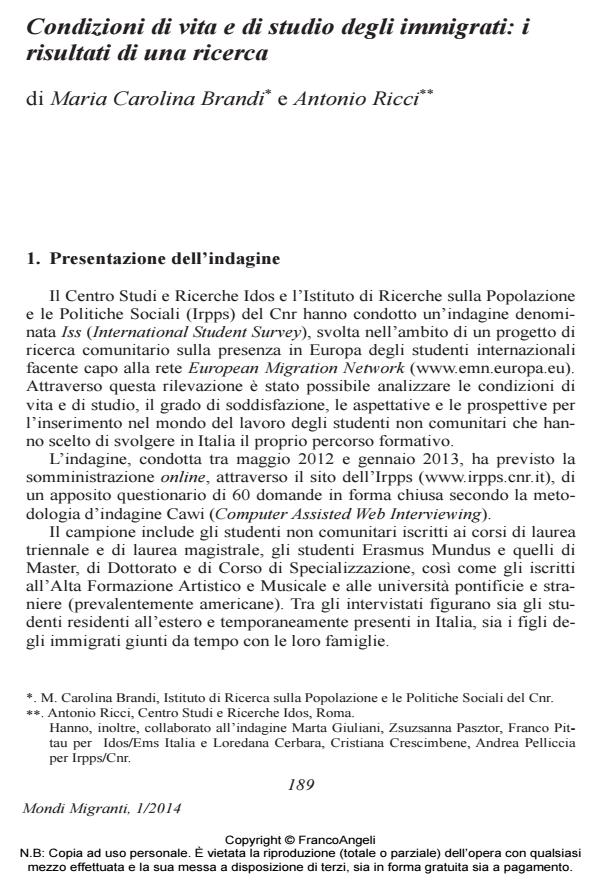Living and study conditions of immigrants: results of a survey
Journal title MONDI MIGRANTI
Author/s Maria Carolina Brandi, Antonio Ricci
Publishing Year 2014 Issue 2014/1
Language Italian Pages 15 P. 189-203 File size 118 KB
DOI 10.3280/MM2014-001011
DOI is like a bar code for intellectual property: to have more infomation
click here
Below, you can see the article first page
If you want to buy this article in PDF format, you can do it, following the instructions to buy download credits

FrancoAngeli is member of Publishers International Linking Association, Inc (PILA), a not-for-profit association which run the CrossRef service enabling links to and from online scholarly content.
Briefly the presents survey shows that the majority of non-EU students enrolled in the Italian universities is in our country specifically for the purpose of study, in most cases because they believe that this choice offers them good career prospects, both at home and in other nations. The process of growing internationalization of the Italian universities, however, is partly due to the number of young people, born in immigrant families who, having completed their upper secondary education in Italian schools, decide to continue their education by enrolling at university. Non-EU students are faced with considerable costs and difficulties. The survey also allowed to outline an exhaustive framework on the inclusion of international students in the labour market. Representing a considerable economic burden on family, many international students seek to find a job, especially when they are not recipients of a scholarship. Finally, the survey also highlights a generally positive relationship with the Italian society of many of the respondents and a general satisfaction with their experience in Italy. However, the positive experience in Italian universities is not enough for many students to pushing them to choose Italy as the country of ultimate destination. Indeed, the fact that in Italy the probability for a graduate to find a job suited to their qualifications are rather limited, it leads many young people to look for a different destination and this leads us to reflect, as much for foreign students as well as for the Italians, about the issue related to the lack of connection between the national labour market and the university system.
Keywords: Survey, immigration, integration, international students, internationalisation, university
- Scuole confessionali in Italia: il caso delle scuole musulmane Alberta Giorgi, Maria Chiara Giorda, in MONDI MIGRANTI 3/2018 pp.201
DOI: 10.3280/MM2017-003010
Maria Carolina Brandi, Antonio Ricci, Condizioni di vita e di studio degli immigrati: i risultati di una ricerca in "MONDI MIGRANTI" 1/2014, pp 189-203, DOI: 10.3280/MM2014-001011